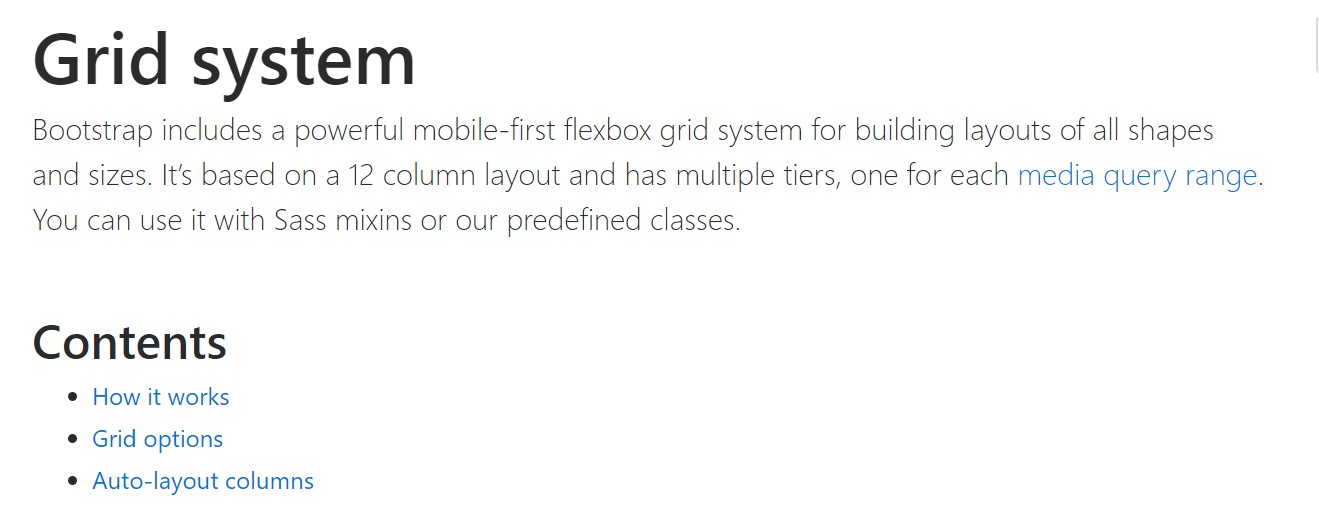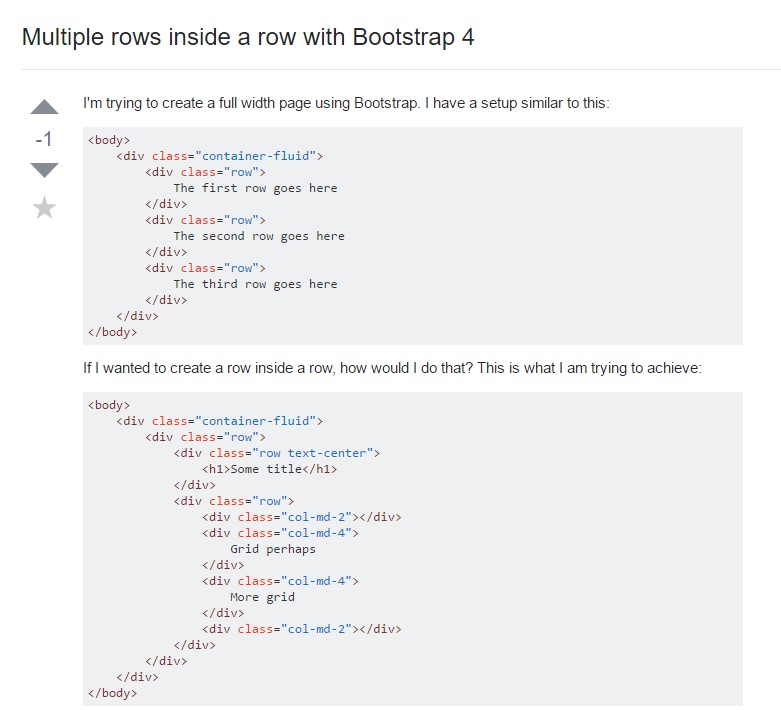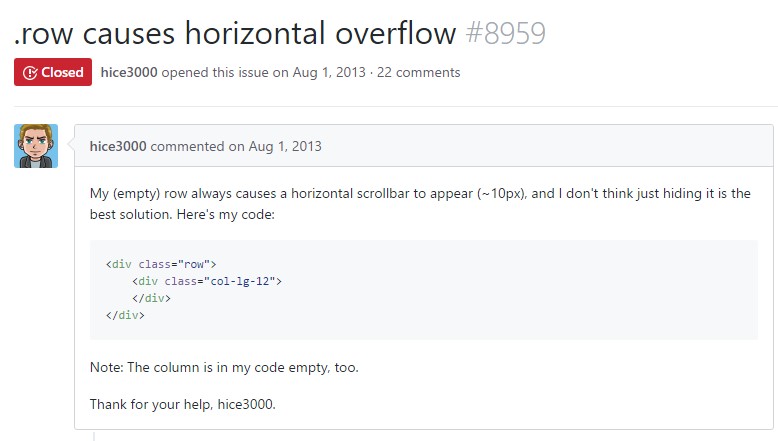Bootstrap Row Panel
Intro
What do responsive frameworks complete-- they supply us with a helpful and functioning grid environment to place out the material, making certain if we determine it appropriate and so it will do the job and show appropriately on any sort of device no matter the dimensions of its screen. And just like in the building every framework involving the most favored one in its most recent version-- the Bootstrap 4 framework-- feature simply a few major features that laid down and merged properly are able to help you design almost any type of pleasing look to fit in your design and visual sense.
In Bootstrap, typically, the grid setup becomes created by three primary components which you have possibly already encountered around checking out the code of several webpages-- these are simply the
.container.container-fluid.row.col-In the event that you're pretty new to this whole entire thing and at times get to think which was the right method these 3 should be positioned inside your markup right here is a plain technique-- everything you ought to bear in mind is CRC-- this abbreviation comes to Container-- Row-- Column. And since you'll shortly adapt watching the columns serving as the inner element it's not change likely you would certainly mistake what the primary and the last C means. ( click here)
Couple of words with regards to the grid system in Bootstrap 4:
Bootstrap's grid mode works with a series of columns, rows, and containers to design and also fix content. It's set up through flexbox and is perfectly responsive. Listed here is an illustration and an in-depth explore just how the grid interacts.
The aforementioned example creates three equal-width columns on little, normal, big, and also extra large size gadgets employing our predefined grid classes. Those columns are centered in the web page together with the parent
.containerHere's in what way it does work:
- Containers deliver a means to centralize your web site's contents. Make use of
.container.container-fluid- Rows are horizontal sets of columns that provide your columns are really lined up effectively. We employ the negative margin method regarding
.row- Web content needs to be set within columns, also only columns may be immediate children of Bootstrap Row Set.
- Thanks to flexbox, grid columns without any a determined width is going to instantly format with equivalent widths. For example, four instances of
.col-sm- Column classes signify the several columns you want to employ removed from the possible 12 per row. { In this way, if you need three equal-width columns, you can surely work with
.col-sm-4- Column
widths- Columns come with horizontal
paddingmarginpadding.no-gutters.row- There are 5 grid tiers, one for each and every responsive breakpoint: all breakpoints (extra small), small, normal, large size, and extra huge.
- Grid tiers are founded on minimum widths, meaning they relate to that tier plus all those above it (e.g.,
.col-sm-4- You can use predefined grid classes or Sass mixins for additional semantic markup.
Recognize the limitations and failures around flexbox, like the inability to utilize several HTML components as flex containers.
Whilst the Containers give us fixed in max width or spreading from edge to edge horizontal area on display screen with small useful paddings across and the columns give the means to delivering the display screen space horizontally-- again with certain paddings around the actual content granting it a space to take a breath we're planning to target our interest to the Bootstrap Row feature and all the good solutions we can use it for styling, aligning and distributing its contents working with the bright brand new to alpha 6 flexbox utilities that are actually some classes to put in to the
.row-sm--md-The ways to apply the Bootstrap Row Class:
Flexbox utilities can possibly be employed for establishing the structure of the components positioned inside a
.row.flex-row.flex-row-reverse.flex-column.flex-column-reverseRight here is precisely how the grid tiers infixes get employed-- for example to stack the
.row.flex-lg-column.flex-Along with the flexbox utilities useded on a
.row.justify-content-start.justify-content-end.justify-content-center.justify-content between.justify-content-aroundThis counts likewise to the upright setting which in Bootstrap 4 flexbox utilities has been simply managed as
.align-.align-items-start.row.align-items-end.align-items-centerAn additional solutions are fixing the items by their baselines being fixed the class is
.align-items-baseline.align-items-stretchAll the flexbox utilities stated already maintain separate grid tiers infixes-- insert them right prior to the last word of the equivalent classes-- like
.align-items-sm-stretch.justify-content-md-betweenFinal thoughts
Here is just how this vital yet at first look not so adjustable component-- the
.rowCheck a number of online video information relating to Bootstrap Row:
Related topics:
Bootstrap 4 Grid system: official records

Multiple rows inside a row with Bootstrap 4

One more complication: .row
causes horizontal overflow
.row
